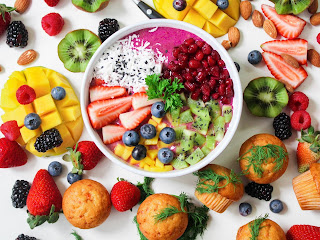Super Food To Boost a Healthy Diet
No single food, even superfoods, can provide all the nutrients, health benefits, and energy we need to feed ourselves. , recommends a healthy diet that "combines healthy choices from all food groups while respecting calorie restriction."
No single food, even superfoods, can provide all the nutrients, health benefits, and energy we need to feed ourselves. , recommends a healthy diet that "combines healthy choices from all food groups while respecting calorie restriction."Years of research have shown that healthy eating patterns can reduce the risk of high blood pressure, heart disease, diabetes, and certain types of cancer. The Mediterranean diet have shown significant health benefits and reductions in chronic diseases.
However, there are some foods that deserve special mention. These "superfoods" provide some very important nutrients that can energize your meals and snacks and further enhance your healthy eating habits. Things to buy
Berry
Berries are high in fiber, have a naturally sweet taste, and their rich color means they're rich in antioxidants and disease-fighting nutrients.
How to include them:
When berries aren't in season, they're just as healthy to buy frozen.
FISH
Fish are a good source of protein and omega-3 fatty acids that help prevent heart disease.
Method:
Buy fresh, frozen or canned fish. Fish with the highest omega-3 content are salmon, tuna steaks, mackerel, herring, trout, anchovies and sardines.
Leafy Vegetables
Dark leafy greens are a good source of vitamin A, vitamin C, calcium, and several phytochemicals (chemicals produced by plants that have health benefits). They also add fiber to your diet.
How to include them:
Try varieties like spinach, chard, kale, kale and mustard greens. Throw it in a salad or sauté it in a little olive oil. You can also add vegetables to soups and stews.
Nuts
Hazelnuts, Walnuts, Almonds, Pecans - Nuts are excellent sources of vegetable protein. It also contains monounsaturated fats, which may be a factor in reducing the risk of heart disease.
How to include them:
Add a handful to oatmeal or yogurt, or eat as a snack. But they're high in calories, so limit them to just a handful. Nuts also go well with cooked vegetables and salads.
Olive oil
Olive oil is a good source of vitamin E, polyphenols and monounsaturated fats, all of which help reduce the risk of heart disease.
Method:
Use instead of butter or margarine for pasta or rice. Sprinkle on vegetables, dressings and stir-fries.
......





Post a Comment